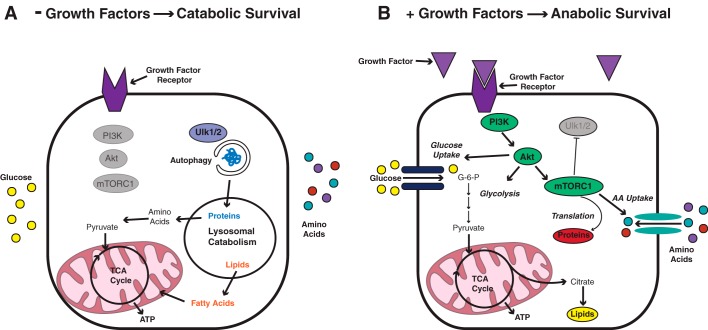Figure 2.
The size of cells not actively engaged in the cell cycle is determined by the magnitude of growth factor–directed nutrient uptake. A, in noncycling (G0) cells that do not receive any growth factor signaling, G0 cells are unable to sustain the cell surface expression of nutrient transporters. The absence of growth factor–induced mTORC1 activity leads to activation of autophagy through Ulk 1/2. The autophagic degradation of intracellular contents supplies the mitochondria with substrates that can be oxidized to maintain ATP production and cell survival. As a result of the degradation of intracellular contents, cells deficient in basal growth factor signaling get smaller over time. B, when G0 cells receive more than basal levels of growth factor signaling, they increase their uptake of glucose and amino acids (AA) through enhanced cell surface expression of nutrient transporters. Glucose is captured intracellularly by phosphorylation, and amino acids (AA) are captured by increased tRNA charging and translation. As a result, cells grow larger in size.

